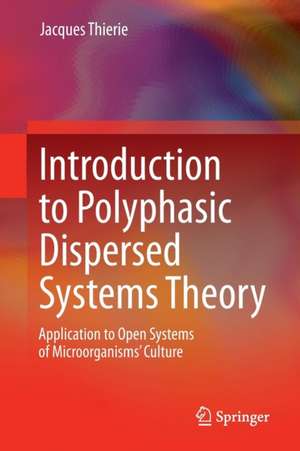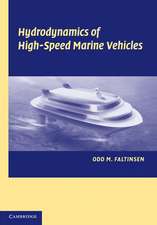Introduction to Polyphasic Dispersed Systems Theory: Application to Open Systems of Microorganisms’ Culture
Autor Jacques Thierieen Limba Engleză Paperback – 29 ian 2016
Preț: 383.50 lei
Nou
Puncte Express: 575
Preț estimativ în valută:
73.39€ • 78.47$ • 61.19£
73.39€ • 78.47$ • 61.19£
Carte tipărită la comandă
Livrare economică 17 aprilie-01 mai
Preluare comenzi: 021 569.72.76
Specificații
ISBN-13: 9783319278520
ISBN-10: 3319278525
Pagini: 205
Ilustrații: IX, 205 p. 53 illus., 2 illus. in color.
Dimensiuni: 155 x 235 x 12 mm
Greutate: 0.31 kg
Ediția:1st ed. 2016
Editura: Springer International Publishing
Colecția Springer
Locul publicării:Cham, Switzerland
ISBN-10: 3319278525
Pagini: 205
Ilustrații: IX, 205 p. 53 illus., 2 illus. in color.
Dimensiuni: 155 x 235 x 12 mm
Greutate: 0.31 kg
Ediția:1st ed. 2016
Editura: Springer International Publishing
Colecția Springer
Locul publicării:Cham, Switzerland
Public țintă
ResearchCuprins
General Introduction.- General Results.- Continuous Cultures: The Chemostat.- General Discussion.
Notă biografică
Jacques Thierie was born in 1949, in Brussels (Belgium). He is a doctor of science and has a career devoted to teaching, but mainly to university research. He is the author of several international articles in physical chemistry, environmental engineering, but especially in applied and theoretical life science and Bioinformatics. He is currently retired from the Free University of Brussels.
Textul de pe ultima copertă
This book introduces a new paradigm in system description and modelling. The author shows the theoretical and practical successes of his approach, which involves replacing a traditional uniform description with a polyphasic description. This change of perspective reveals new fluxes that are cryptic in the classical description. Several case studies are given in this book, which is of interest of those working with biotechnology and green chemistry.
Caracteristici
Presents a new approach in metabolic engineering Describes original modelling of open bioreactors Gives the reader an innovative approach of microbial consortiums Includes supplementary material: sn.pub/extras














